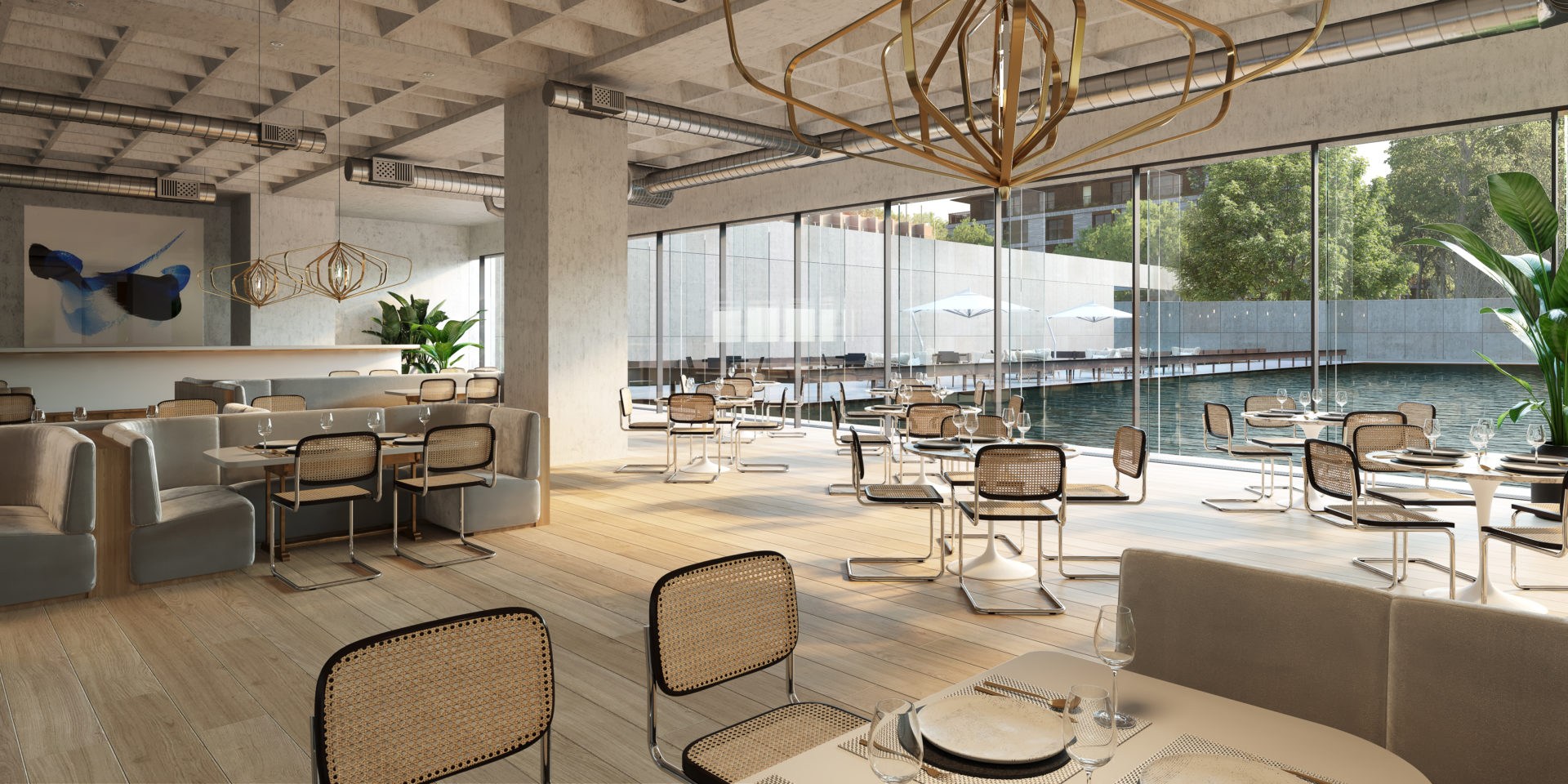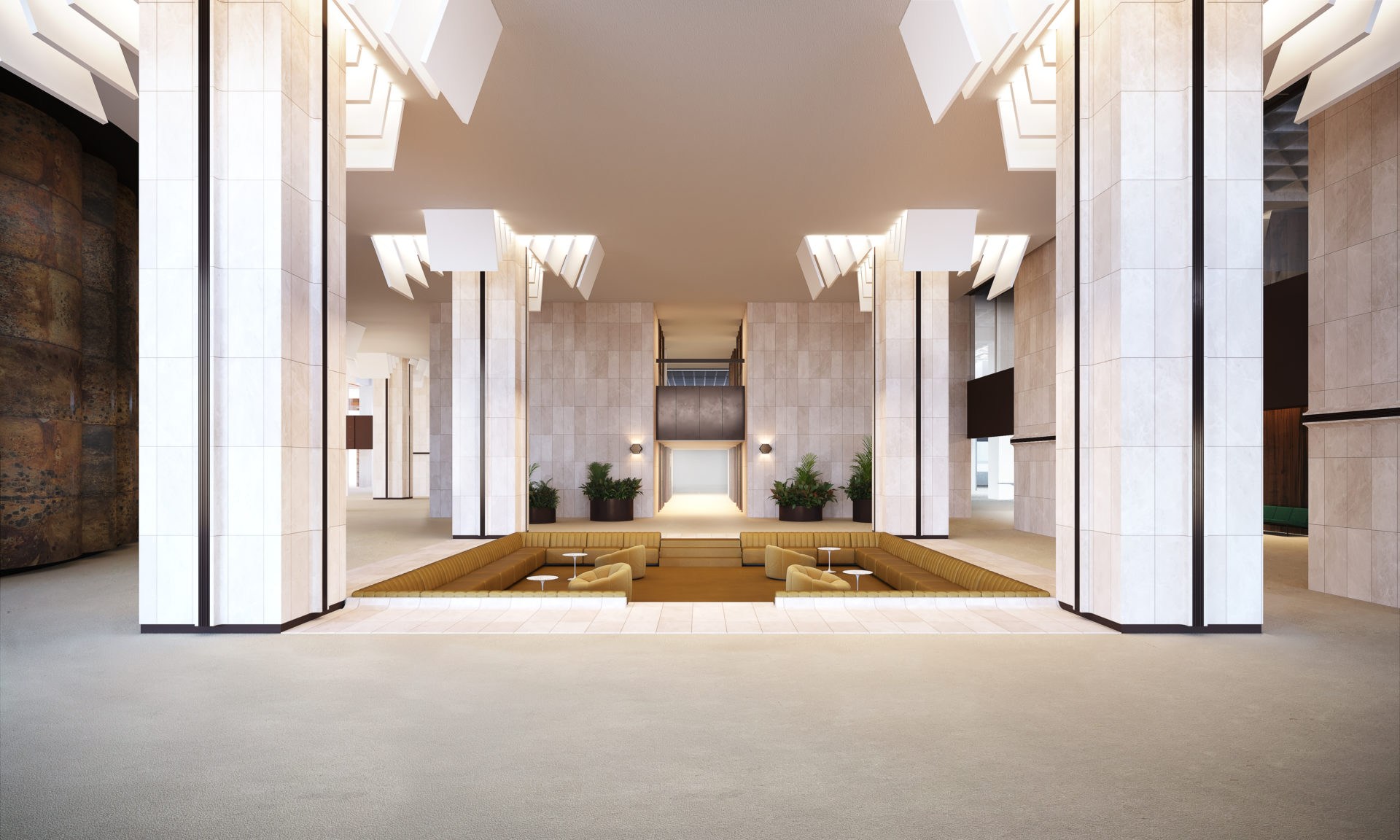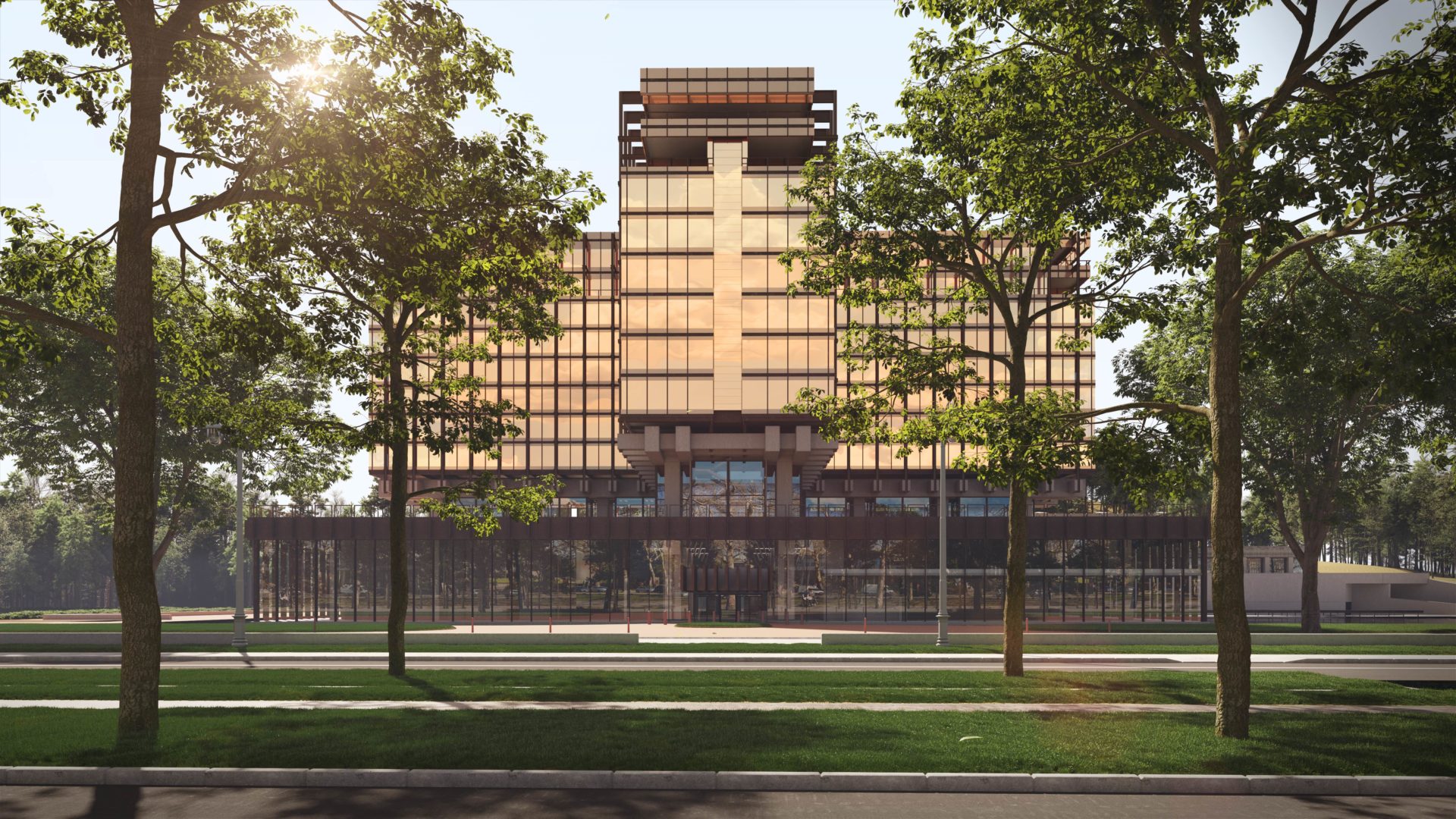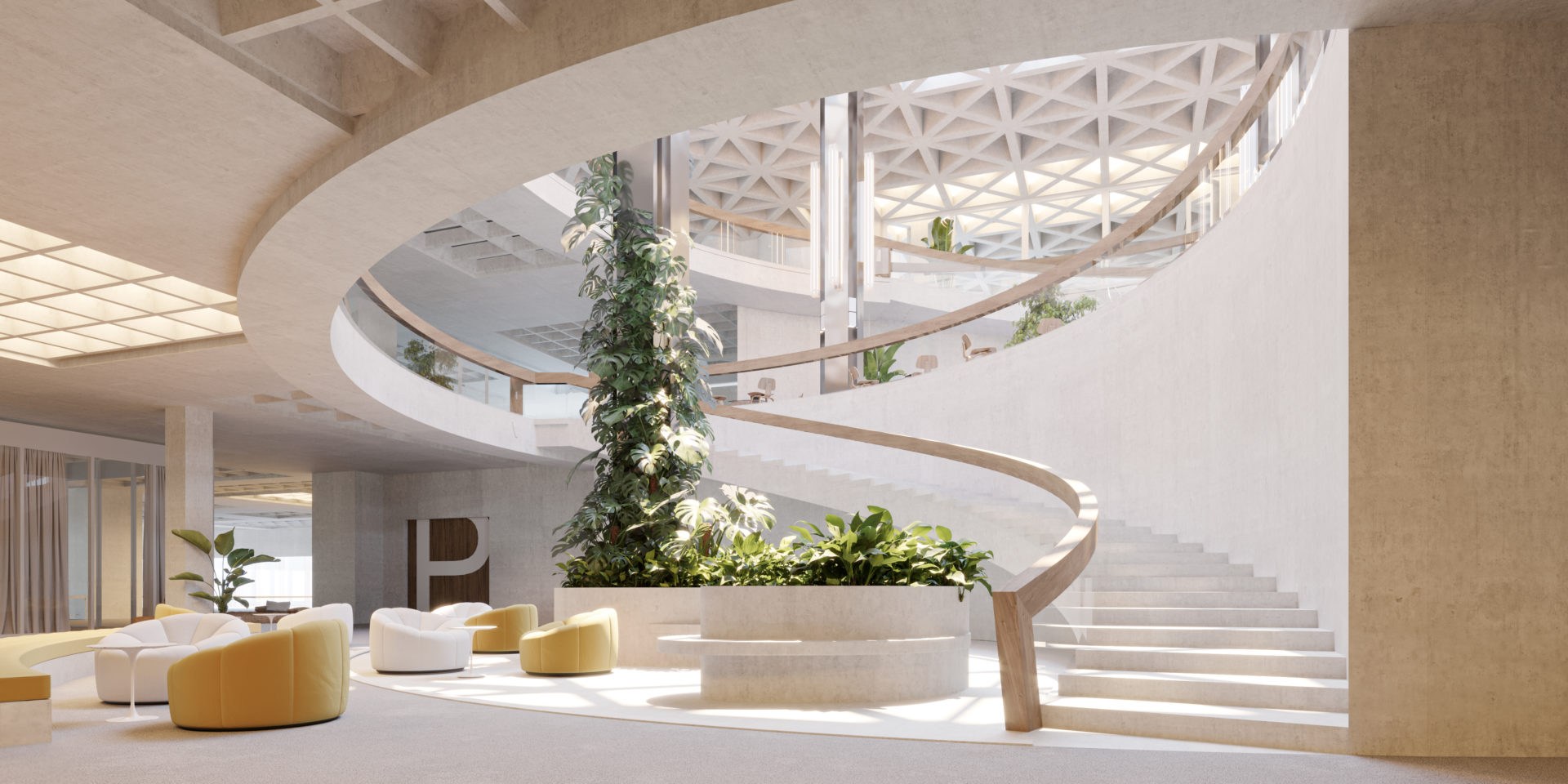An iconic Brussels building that formerly served as the Royale Belge will be transformed into a multifunctional space that features a restaurant, hotel and sports club, according to a press release from Pascal Smet, Brussels State Secretary for Urban Planning and Heritage.
The cross-shaped building was designed by Belgian architect René Stapels and French architect Pierre Dufau, and built between 1967 and 1970.
It was at one point home to insurer Royale Belge, but sold in 1999 and again in 2017.
It was supposed to house the United States Embassy, but when the building couldn’t be modified to include heavier, bullet-proof glass without fundamentally changing the unique appearance of the structure (which the Brussels-Capital Region did not allow for), the Americans abandoned the project.
“This iconic building will be opened to the public and given a beautiful new life,” said Smet. “Brussels residents and visitors will have a great time here, because in addition to offices and co-working spaces, the building will also house a restaurant, a four-star hotel and a sports club with a 25m outdoor pool.”
“This project stands for quality - an example of how to give iconic Brussels buildings a new, multifunctional future.”
Images from the office of Pascal Smet.
The works currently planned for the building are the result of thorough preliminary research aimed at preserving the heritage while giving the building a new use.
They’ll also adapt the building to current standards and requirements for structures: there will be new vertical circulation, the base will be redesigned, openings will be made in the entrance hall and the escalators will disappear.
The former refectory will make way for a sports club and an outdoor swimming pool will be constructed.
"This iconic site is anchored in the Brussels landscape. This project proves that high-quality heritage sites can not only continue to exist, but can also be given a new life,” said Nicolas Billen, project developer for CORES Development.
The immediate surroundings and the accompanying park will also be thoroughly renovated, according to Smet’s office.
Their original composition and design will be preserved and, where necessary, restored to their original model.
“'Quality' is the key word in this project. This is evident not only from the fusion of architecture and heritage, but also from the mixed programme that gives this large building a new, fresh start,” Smet emphasised.
Images from the office of Pascal Smet.
The office spaces planned for the building have already been rented, the Minister says.
“This proves that this project meets new needs, which were made all the more evident by the coronavirus crisis, and that there is a demand from the sector for quality projects,” Smet said.
Efforts are also being made to enhance the biodiversity of the site: the banks will be made more natural, there will be room again for a marshy meadow and the group of trees that used to be part of the Sonian Forest will be almost completely preserved.







